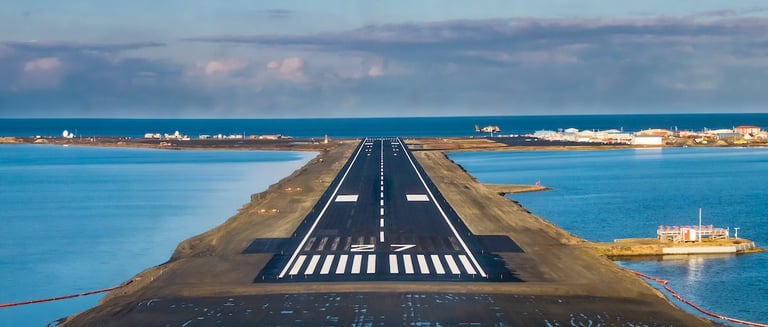Thailand's Aviation Ambitions Soar: PM Unveils Plans for Mid-Sea Airport in Hua Hin
Discover Thailand's aviation vision as Prime Minister reveals plans for a cutting-edge mid-sea airport in Hua Hin, aimed at elite travelers. Explore the broader initiative to boost tourism and transform Thailand into Asia's premier aviation hub
Author: Mark Kreitzman - over 20 years experience investing in Thailand real estate, crypto/blockchain and cybersecurity expert
5/3/20242 min read


Prime Minister Srettha Thavisin has unveiled a sweeping initiative to position Thailand as a global aviation hub, with plans to revamp and expand airport infrastructure nationwide. Among the ambitious proposals is the development of a state-of-the-art mid-sea airport in Hua Hin, aimed at catering exclusively to high-net-worth individuals traveling on private jets. This visionary project is set to connect three of Thailand's most picturesque destinations: Koh Samui, Koh Chang, and Hua Hin itself. While specifics regarding Hua Hin's existing airport were not outlined, the announcement underscores a broader commitment to enhancing Thailand's aviation sector.
The unveiling of these plans follows closely on the heels of the Airports of Thailand (AOT) announcement of a groundbreaking seaplane terminal project at Phuket International Airport, scheduled to commence construction in 2025. This innovative initiative aims to increase Phuket International Airport's capacity and usher in a new era of passenger transport. The introduction of seaplane services will offer travelers convenient connections to key tourist destinations, including Phuket, Samui, Pattaya, and notably, Hua Hin.
The Prime Minister's announcement, under the banner "IGNITE THAILAND, AVIATION HUB," signals a comprehensive strategy to bolster both infrastructure and tourism sectors. Joined by key officials from the Ministry of Transport and Airports of Thailand Public Company Limited (AOT), Thavisin described a future where Thailand emerges as the preeminent Aviation Hub of Asia. Plans entail upgrades to primary and secondary airports across the nation, including major expansions at Suvarnabhumi and Don Mueang airports. These developments aim to accommodate a staggering 200 million tourists, elevating Thailand into the top 20 global rankings and securing the third spot in Asian aviation.
Despite the progress made, challenges persist, particularly at Suvarnabhumi Airport, which has seen a decline in global rankings. To address these issues, the government plans to streamline immigration processes, improve ground services, and open Suvarnabhumi to more private jets. Additionally, upgrades are slated for Don Mueang Airport, transforming it into a comprehensive Point to Point Airport, capable of handling 50 million passengers by 2030.
The development of the mid-sea airport in Hua Hin forms part of a broader blueprint to establish Andaman and northern airports, enhancing connectivity and facilitating direct international flights. This comprehensive approach underscores Thailand's commitment to transforming its economy, promoting tourism, and solidifying its position as a top aviation hub in Asia. Collaborations with both local and international airlines aim to offer tourists attractive packages and elevate Thailand as a premier destination. These initiatives represent a concerted effort to drive economic growth, support tourism, and facilitate increased air travel.


